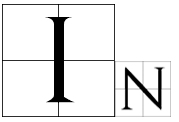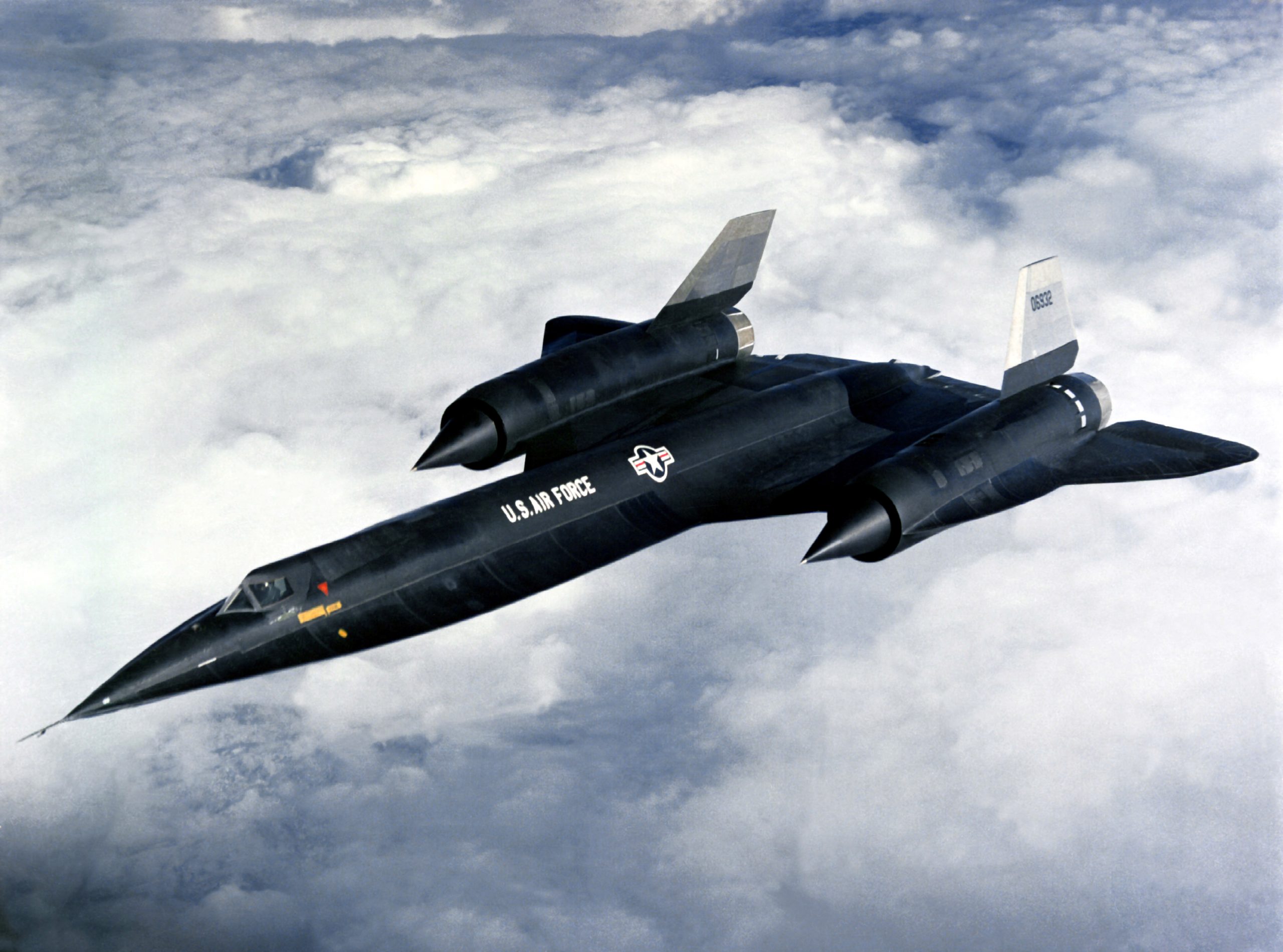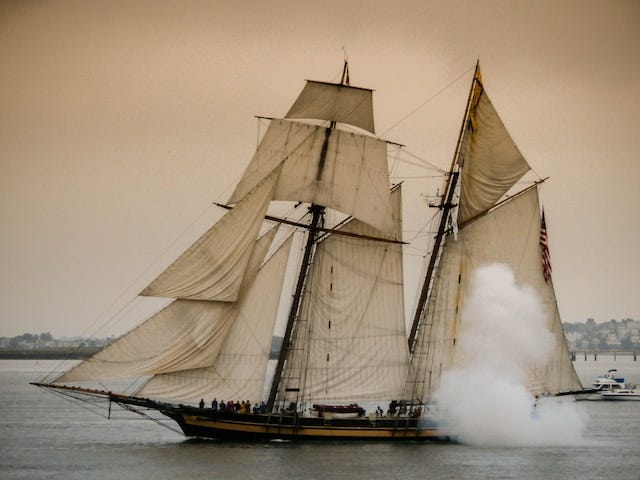 1959, CORONA — the CIA and U.S. Air Force’s secret satellite program to provide imagery and mapping of the Soviet Union — was still new. At that time, the U-2 reconnaissance aircraft was America’s principal means of determining what kinds of strategic weapons the USSR had and how many of them. The U-2 could fly at an eye-popping 70,000 feet — which was beyond the range of Soviet fighters and missiles — to take detailed photos of Soviet Block military facilities. But the Soviets were tracking the U-2’s from the beginning. (The U-2 made its first flight in 1955) It soon became clear that another solution would be needed.[i]
1959, CORONA — the CIA and U.S. Air Force’s secret satellite program to provide imagery and mapping of the Soviet Union — was still new. At that time, the U-2 reconnaissance aircraft was America’s principal means of determining what kinds of strategic weapons the USSR had and how many of them. The U-2 could fly at an eye-popping 70,000 feet — which was beyond the range of Soviet fighters and missiles — to take detailed photos of Soviet Block military facilities. But the Soviets were tracking the U-2’s from the beginning. (The U-2 made its first flight in 1955) It soon became clear that another solution would be needed.[i]
That need for an alternative to the U-2 was highlighted when, in May 1960, the Soviet Union shot down a U-2, and publicly tried its pilot, Francis Gary Powers.[ii]
Under the auspices of the highly secret Project OXCART, CIA developed the A-12 to succeed U-2. The A-12 would be a high-flying reconnaissance aircraft that, unlike the U-2, could avoid Soviet air defenses. CIA awarded the OXCART contract for the creation of the A-12 to Lockheed Martin in 1959, and the aircraft achieved full operational readiness in November 1965. During testing, the A-12 reached a speed of Mach 3.29 (over 2,200 mph) and an altitude of 90,000 feet,[iii] and in doing so, set an unbroken record for piloted jet aircraft.[iv]
The development of the A-12 was no walk in the park. CIA set strict requirements for speed, altitude, range and radar cross-section. For example, the A-12 was designed with a usual cobra-like shape that allowed for the better dispersion of radar pulses.[v]
While the A-12 was meant to supersede the U-2, in the aftermath of Powers’ shoot-down over the Soviet Union, all Soviet overflights were halted. By the time the CIA’s first A-12 deployment in 1967, the CORONA satellite program was in full-swing, collecting thousands of images worldwide each year, though they were less timely and of a lower resolution than the A-12. On the other hand, CORONA was not vulnerable to anti-aircraft missiles and were much less provocative than A-12 overflights.[vi]
In that sense, the A-12 rollout was a victim of poor timing. Nevertheless, by early 1967, the Johnson administration was growing increasingly alarmed that the North Vietnamese could deploy surface-to-surface missiles (SSM) targeted at the south without being detected. In response from a request from the Johnson administration, CIA proposed running A-12 flights, which also had better cameras than the U-2.[vii]
On May 31, 1967, first CIA-piloted A-12 mission obtained photography 70 known surface-to-air missile (SAM) sites and nine other priority targets. No SSM facilities were located. Through May 6, 1968, the A-12 pilots flew 24 missions over North Vietnam; two over Cambodia, Laos and the DMZ; and three North Korea.[viii] In one mission, an A-12 enabled the U.S. military to locate the USS Pueblo, which had been illegally seized by North Korea, and to confirm no further hostilities were imminent.[ix]
Though the A-12 flights in Southeast Asia were successful, the most advanced aircraft ever built halted missions after only 29 operational flights. Despite its advanced designed and the clear benefits of the program, fiscal pressures and competition between the reconnaissance programs of CIA and the Air Forced doomed the program. Even as the A-12 was declared operational in 1965, the Bureau of Budget was circulating a memo that expressed concerns about the cost of the A-12.[x]
In a similar vein, a 1966 CIA study estimated the total costs for the A-12 OXCART and successor SR-71 Blackbird aircraft systems costs from Fiscal Year 1968 through 1972 would be $1,377 million. Of this number, A-12 costs would be $488 million.[xi] (Meanwhile, the SR-71 program continued until 1989, when it was decommissioned. The SR-71 program was briefly revived in the mid-1990’s, but was officially terminated in June 1999.)[xii]
In 2007, the U.S. Air Force transferred an A-12 to CIA for display, and it arrived at CIA Headquarters on August. A crew of five assembled the A-12 air frame in 10 days, and its official presentation was held on September 19, as part of CIA’s 60th anniversary celebration. Later, the A-12 was lifted by a crane and placed on a mount that holds it in place. In early May 2008, CIA Facilities Support completed the display of the A-12, 40 years after the OXCART Program ended.[xiii]
***
Endnotes
[i] Robarge, David. Archangel: CIA’s Supersonic A-12 Reconnaissance Aircraft. CIA: Washington, D.C. Second Edition, 2012, pg. 1
[ii] Pedlow, Gregory W. and Welzenbach, Donald E. “The Central Intelligence Agency and Overhead Reconnaissance: The U-2 and OXCART Programs, 1954–1974.” The History Staff, Central Intelligence Agency: Washington, D.C., 1992. (Approved for Public Release 2013/06/25), pg. 11. Obtained from CIA Electronic Reading Room. https://www.cia.gov/readingroom/docs/DOC_0000190094.pdf
[iii] CIA. “Untouchable.” The Art of Intelligence. CIA Museum and the Center for the Study of Intelligence: Washington, D.C. 2016. p. 32.
[iv] CIA. “OXCART vs Blackbird: Do You Know the Difference?” 12 November 2015. Obtained from CIA website at https://www.cia.gov/stories/story/oxcart-vs-blackbird-do-you-know-the-difference/
[v] Robarge, 1, 6.
[vi] CIA. “A-12 OXCART.” (n.d.) Obtained from CIA website at https://www.cia.gov/legacy/headquarters/a-12-oxcart/
[vii] Robarge, 33.
[viii] Robarge, 35.
[ix] “Untouchable.
[x] Pedlow and Welzenbach, 307–308.
[xi] Fischer, Bill, Bennington, Herb and Parangosky, John. “Summary of BOB-CIA-DOD Study on OXCART and SR-71 Programs.” (1966, December 1). Study prepared by BOB, DOD and CIA. Pg. 4. Retrieved from https://www.cia.gov/readingroom/docs/DOC_0001471749.pdf
[xii] “OXCART vs Blackbird: Do You Know the Difference?”
[xiii] A-12 OXCART.
References
CIA. “Untouchable.” The Art of Intelligence. CIA Museum and the Center for the Study of Intelligence: Washington, D.C. 2016.
CIA. “OXCART vs Blackbird: Do You Know the Difference?” 12 November 2015. Obtained from CIA website at https://www.cia.gov/stories/story/oxcart-vs-blackbird-do-you-know-the-difference/
CIA. “A-12 OXCART.” (n.d.) Obtained from CIA website at https://www.cia.gov/legacy/headquarters/a-12-oxcart/
Fischer, Bill, Bennington, Herb and Parangosky, John. “Summary of BOB-CIA-DOD Study on OXCART and SR-71 Programs.” (1966, December 1). Study prepared by BOB, DOD and CIA. Retrieved from https://www.cia.gov/readingroom/docs/DOC_0001471749.pdf
Pedlow, Gregory W. and Welzenbach, Donald E. “The Central Intelligence Agency and Overhead Reconnaissance: The U-2 and OXCART Programs, 1954–1974.” The History Staff, Central Intelligence Agency: Washington, D.C., 1992. (Approved for Public Release 2013/06/25). Obtained from CIA Electronic Reading Room. https://www.cia.gov/readingroom/docs/DOC_0000190094.pdf
Robarge, David. Archangel: CIA’s Supersonic A-12 Reconnaissance Aircraft. CIA: Washington, D.C. Second Edition, 2012.

When I was a kid, my mom thought that I’d have my own talk show because I was always asking people lots of questions about themselves. When I graduated college, I began living my own dream as a reporter for a news media outlet. As a journalist, I spoke daily with public affairs officers who represented diverse government and corporate clients.
I soon realized that public affairs combined the best of both worlds of journalism and television talk shows — I get to learn interesting and unusual things about people who worked with me, I then get to tell their story. With this thought in mind, I spent two years at CIA, where I was a supervisor in the Public Communications Branch at the Office of Public Affairs.
As a strategic communicator, I juggle many balls — but I’m a writer first. Writing is my first love. You can say that I’m addicted to it.
On a personal level, my parents taught me the value of travel when I was young, and since then, I’ve been an avid traveler — I have visited 20 countries. Though I’ve learned important lessons from each of my trips, my trip to Chile — the string bean-shaped country — was my favorite.
To learn more about me and my digital travels, visit my Twitter page.





